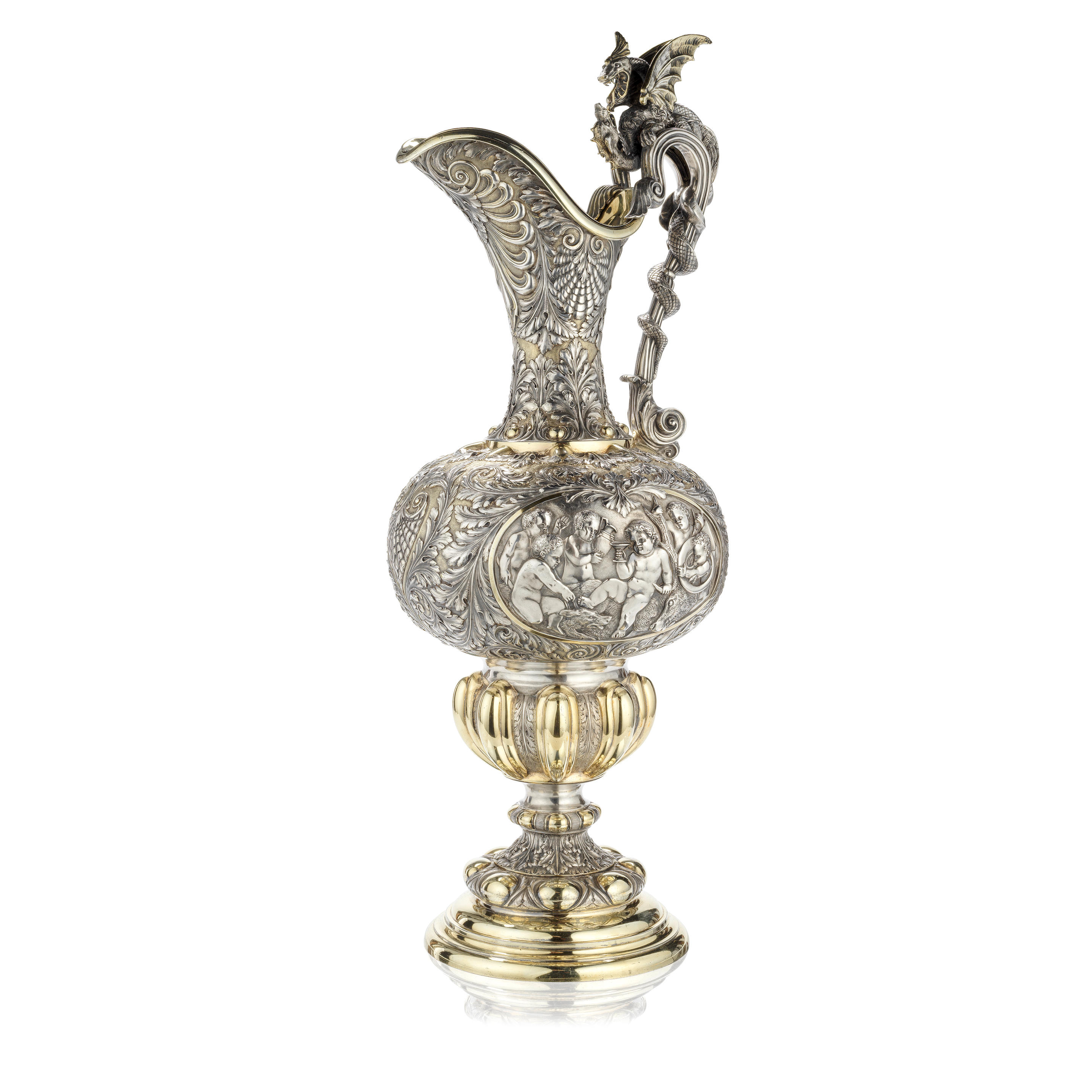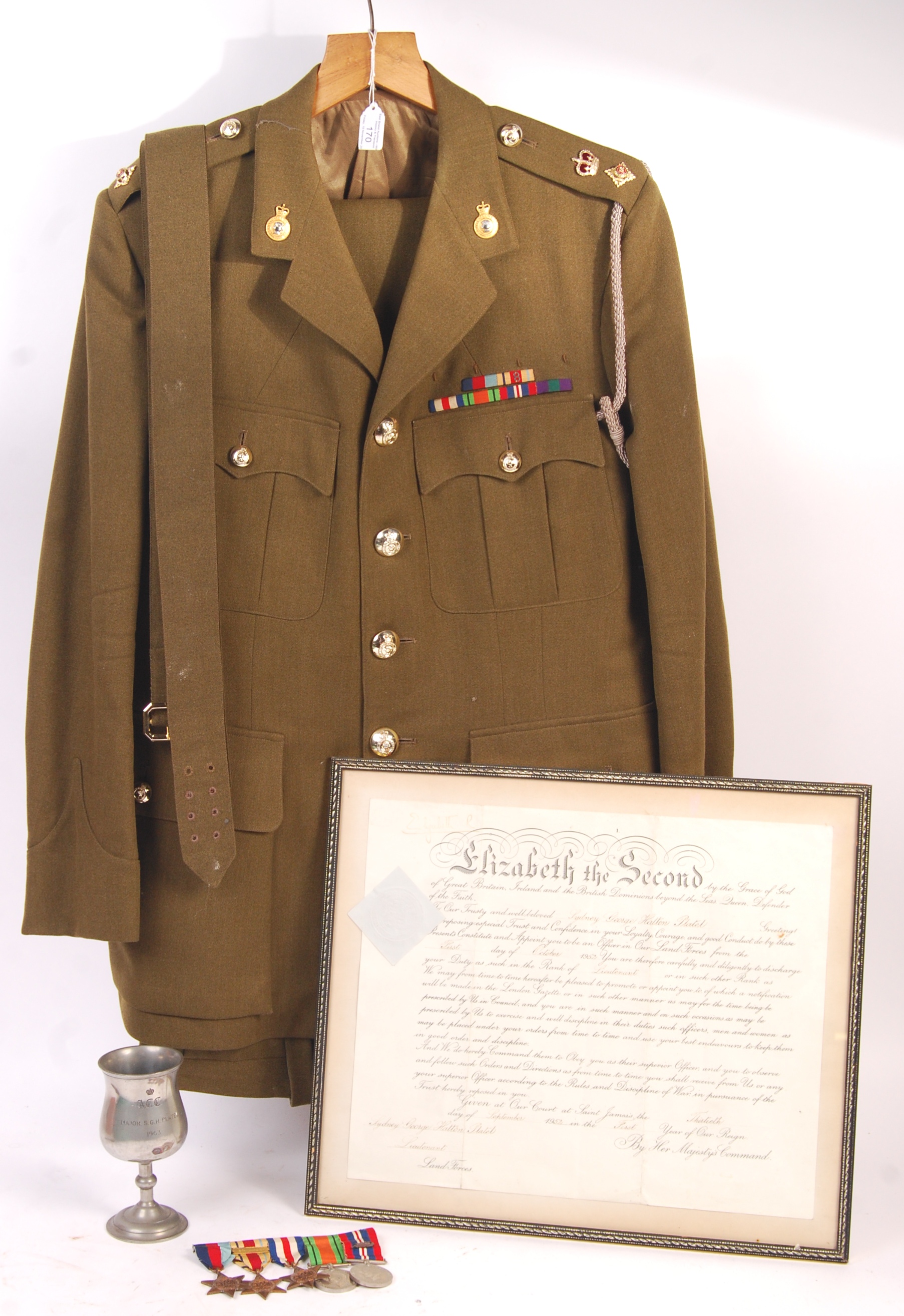An impressive Second World War test pilot’s M.B.E., Great War D.S.C. and Bar group of six awarded to Flight Lieutenant H. V. Worrall, Royal Air Force, late Royal Naval Air Service: having been decorated for landing a direct hit on the Goeben in the Dardanelles, and for excellent spotting work in the Third Battle of Gaza in 1917, he became a pioneer of civil aviation, among other feats completing a 20,000 mile survey of Africa in a Flying Boat as co-pilot to Sir Alan Cobham in 1927-28 Distinguished Service Cross, G.V.R., with Second Award Bar, in its Garrard & Co. case of issue; The Most Excellent Order of the British Empire, M.B.E. (Civil) Member’s 2nd type breast badge, in its Royal Mint case of issue; 1914-15 Star (Flt. S. Lt., R.N.A.S.); British War and Victory Medals (Capt., R.A.F.); French Croix de Guerre 1914-1918, generally good very fine (6) £10000-12000 Footnote M.B.E. London Gazette 9 January 1946. D.S.C. London Gazette 14 September 1918: ‘In recognition of their services on the occasion of the sortie of the Goeben and Breslau from the Dardanelles on 20 January 1918.’ The original recommendation states: ‘He made a successful attack on the Goeben, obtaining a direct hit. This was his first night flight.’ Bar to D.S.C. London Gazette 20 February 1919: ‘In recognition of their services during Naval operations carried out in conjunction with Military operations in Palestine from October to December 1917.’ The original recommendation states: ‘He carried out very successful spotting work for Requin off the Wadi Hesi.’ French Croix de Guerre London Gazette 22 February 1918. Harry Vernon Worrall was born in the Fiji Islands in June 1888, the son of a missionary, and was educated at Queen’s College, Hobart, Tasmania. From 1903-15 served an apprenticeship with the Melbourne Electric Supply Company, experience that placed him in good stead for his subsequent application to join the Royal Naval Air Service, so much so that he was quickly appointed to a commission as a Temporary Flight Sub. Lieutenant in August of the latter year. He subsequently commenced pilot training at Eastbourne in Graham White Box Kite aircraft, a means of transport that he later described as being ‘as open to the elements as a sea-side char-a-banc and four times as uncomfortable.’ Later in the same year he graduated to Curtiss, Bleriot and Cauldron aircraft types, in addition to gaining experience on Short Seaplanes at R.N.A.S. Westgate, and in the summer of 1916 he was assessed as a ‘Good officer and seaplane pilot’ who was ready for his first operational posting. Worrall was duly ordered to join the seaplane base at Port Said, but would also operate from the carrier H.M.S. Empress over the coming months, his D.S.C.-winning exploits on the night of 24-25 January 1918 being a case in point. On that occasion he became “waterborne” from Empress off Mudros at 10 p.m., and took-off with Lieutenant L. H. Pakenham-Walsh, Cheshire Regiment, attached R.N.A.S., as his Observer, half an hour later. In the company of one other aircraft, and carrying two 651lb. bombs, their mission was to attack the Goeben, then aground at Nagara Point in the Dardanelles. Worrall subsequently delivered the following report of the evening’s proceedings: ‘Our bombs were dropped in one run from stern to bow from 3000 feet, one bomb striking the bow and the other falling over. Rather heavy anti-aircraft fire was experienced but the shooting was rather low at first, improving as we left. We observed one battery on the beach east of Goeben, one battery south of Goeben and one on the peninsula west of Goeben. No craft of any description were observed alongside the target. Three searchlights were sweeping the Narrows and patrol boats were sighted south of Imbros and light put on them to which they replied.’ An indication of the effectiveness of these enemy defences was demonstrated two nights later, when Lieutenant L. H. Pakenham-Walsh, flying with another pilot, Flight Lieutenant C. G. Bron
An impressive Second World War test pilot’s M.B.E., Great War D.S.C. and Bar group of six awarded to Flight Lieutenant H. V. Worrall, Royal Air Force, late Royal Naval Air Service: having been decorated for landing a direct hit on the Goeben in the Dardanelles, and for excellent spotting work in the Third Battle of Gaza in 1917, he became a pioneer of civil aviation, among other feats completing a 20,000 mile survey of Africa in a Flying Boat as co-pilot to Sir Alan Cobham in 1927-28 Distinguished Service Cross, G.V.R., with Second Award Bar, in its Garrard & Co. case of issue; The Most Excellent Order of the British Empire, M.B.E. (Civil) Member’s 2nd type breast badge, in its Royal Mint case of issue; 1914-15 Star (Flt. S. Lt., R.N.A.S.); British War and Victory Medals (Capt., R.A.F.); French Croix de Guerre 1914-1918, generally good very fine (6) £10000-12000 Footnote M.B.E. London Gazette 9 January 1946. D.S.C. London Gazette 14 September 1918: ‘In recognition of their services on the occasion of the sortie of the Goeben and Breslau from the Dardanelles on 20 January 1918.’ The original recommendation states: ‘He made a successful attack on the Goeben, obtaining a direct hit. This was his first night flight.’ Bar to D.S.C. London Gazette 20 February 1919: ‘In recognition of their services during Naval operations carried out in conjunction with Military operations in Palestine from October to December 1917.’ The original recommendation states: ‘He carried out very successful spotting work for Requin off the Wadi Hesi.’ French Croix de Guerre London Gazette 22 February 1918. Harry Vernon Worrall was born in the Fiji Islands in June 1888, the son of a missionary, and was educated at Queen’s College, Hobart, Tasmania. From 1903-15 served an apprenticeship with the Melbourne Electric Supply Company, experience that placed him in good stead for his subsequent application to join the Royal Naval Air Service, so much so that he was quickly appointed to a commission as a Temporary Flight Sub. Lieutenant in August of the latter year. He subsequently commenced pilot training at Eastbourne in Graham White Box Kite aircraft, a means of transport that he later described as being ‘as open to the elements as a sea-side char-a-banc and four times as uncomfortable.’ Later in the same year he graduated to Curtiss, Bleriot and Cauldron aircraft types, in addition to gaining experience on Short Seaplanes at R.N.A.S. Westgate, and in the summer of 1916 he was assessed as a ‘Good officer and seaplane pilot’ who was ready for his first operational posting. Worrall was duly ordered to join the seaplane base at Port Said, but would also operate from the carrier H.M.S. Empress over the coming months, his D.S.C.-winning exploits on the night of 24-25 January 1918 being a case in point. On that occasion he became “waterborne” from Empress off Mudros at 10 p.m., and took-off with Lieutenant L. H. Pakenham-Walsh, Cheshire Regiment, attached R.N.A.S., as his Observer, half an hour later. In the company of one other aircraft, and carrying two 651lb. bombs, their mission was to attack the Goeben, then aground at Nagara Point in the Dardanelles. Worrall subsequently delivered the following report of the evening’s proceedings: ‘Our bombs were dropped in one run from stern to bow from 3000 feet, one bomb striking the bow and the other falling over. Rather heavy anti-aircraft fire was experienced but the shooting was rather low at first, improving as we left. We observed one battery on the beach east of Goeben, one battery south of Goeben and one on the peninsula west of Goeben. No craft of any description were observed alongside the target. Three searchlights were sweeping the Narrows and patrol boats were sighted south of Imbros and light put on them to which they replied.’ An indication of the effectiveness of these enemy defences was demonstrated two nights later, when Lieutenant L. H. Pakenham-Walsh, flying with another pilot, Flight Lieutenant C. G. Bron





/113354/Internet%20Image%201.jpg)
/87169/Internet%20Image%201.jpg)

/116518/Internet%20Image%201.jpg)


/30619/Internet%20Image%201.jpg)
/114441/Internet%20Image%201.jpg)
/100350/Internet%20Image%201.jpg)
/89484/Internet%20Image%201.jpg)
Try LotSearch and its premium features for 7 days - without any costs!
Be notified automatically about new items in upcoming auctions.
Create an alert